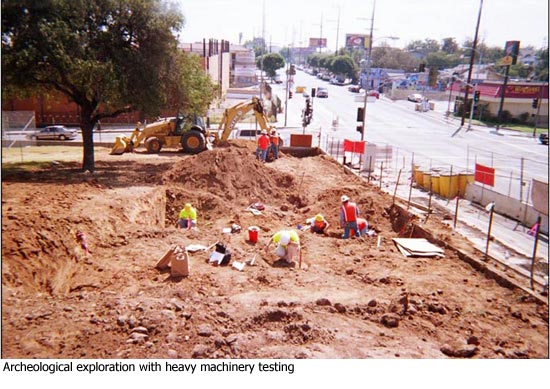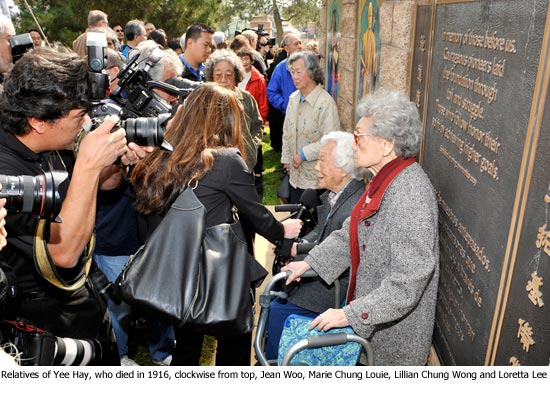Metro rights historical wrong
March 8, 2010
Nearly five years ago, at the mouth of a new subway tunnel in East L.A., construction workers encountered a stunning find: coffin wood and human bones.
On that day in June, 2005, work on the Metro Gold Line Extension project abruptly stopped.
Archeologists using ground-penetrating radar and metal detectors began an exploration that lasted nearly a year. In the end, 174 burial sites with human remains and such artifacts as coins, coffin hardware, pottery, even opium pipes.
The workers had unearthed not only a long-forgotten public graveyard from the late 1800s but also a shameful chapter in Los Angeles’ history.
The hidden cemetery at First and Lorena streets had been the final resting place for indigents of all races, but mostly for immigrant Chinese laborers who’d been barred from other graveyards because of discrimination in the era of the Chinese Exclusion Act. The land—just outside Evergreen Cemetery, where some of the day’s most prominent civic leaders were buried—had become part of the Los Angeles County Crematorium in the 1920s.
Crews discovered the remains while removing a retaining wall on the crematorium’s south side. When news of the find spread, Chinese-American activists called for a quick investigation and a more respectful reburial.
And so on Monday morning, beneath lowering skies at Evergreen Cemetery in Boyle Heights, approximately 100 community members and a contingent of elected officials and Metro executives solemnly gathered to honor the dead and recognize their contributions by formally dedicating a new memorial wall.
Evoking the adobe walls and Spanish-tile roof typical of 19th century mission architecture, the wall tells the story on a pair of bronze plaques flanking a quartet of paintings illustrating the region’s Mexican, Native American, Chinese and Catholic heritage. Eight niches hold mounted fragments of tombstones and memorial markers, several comprising only Chinese characters. In the center, a large plaque reads simply:
In memory of those before us.
Courageous pioneers laid
the foundation through toil and struggle.
Those who follow honor their
spirit by achieving higher goals.
Supervisors Gloria Molina and Zev Yaroslavsky, Rep. Judy Chu and Los Angeles City Councilmember Jose Huizar were among the speakers recalling the historical sacrifices and warmly recalling their own childhood ties to the area. Irvin R. Lai, representing the Chinese-American community, delivered the “Sojourner’s Poem” composed especially for the occasion. The ceremony concluded with an interfaith benediction by a Catholic priest and Buddhist monk before the ceremonial unveiling.
The human remains and artifacts will be reburied inside Evergreen next to a historic Chinese shrine that was built outside the cemetery in 1888.
“On each grave with a marker,” Lai said, “we have Chinese characters that depict the ideas and the lament of the conditions that they were in,” he explained. “It’s very important that when you look at the grave and you see those four characters, they’re like talking back to you about how they feel at that particular time. The conditions were very bad, and they were treated very wrong.”
The archeological discovery revealed the extent of racism leveled at Chinese laborers in 19th century Los Angeles. In newspaper articles, they were derided as “Celestials” and “heathens.” Their loved ones were forced to pay $10 for burials while other impoverished families were laid to rest for free.
Some of the plots for the Chinese had been marked with headstones or “burial bricks,” painted or incised with information about the deceased, including the home village. One extraordinarily precise brick said a man named Wong, from a village called Wing Shing, died on December 11, 1885, between 4 and 5 in the morning.
The long-obscured graves of Europeans also produced a trove that included metal coffin fittings, buttons, ale bottles and a $10 gold piece. The headstones revealed that there’d been a high number of childhood deaths. Anna Ludemann, for example, died at the age of five months in 1880, her passing marked with a small marble headstone adorned with a cross.
Once archeologists had completed their painstaking excavation by hand of the remains, Metro established a public process involving community members to chart the future course.

An advisory committee comprising business owners and residents along the six-mile alignment of the Eastside Extension, joined by members of the Chinatown community, met monthly over the course of three years to develop recommendations.
Once the initial decision was made to inter the remains at the neighboring Evergreen Cemetery, Metro engaged a feng shui consultant to determine the most hospitable location—and so the cemetery’s Chinese Shrine became the fitting and final resting place for these early Los Angeles pioneers.
Among those attending Monday’s ceremony was Gaye Buzbee Jacobs and her daughter Susan. They’d come from Colorado to pay final tribute to Gaye’s great-grandfather’s youngest brother, Thomas, a boy of 17 whose 1883 gravestone was among those unearthed in the potter’s field.
For her, the discovery had solved a longstanding family mystery. “He was a rascal,” she conceded with a chuckle, “he ran away from Colorado after he’d gotten in some trouble, and then got in some trouble here.”
Although Metro did exhaustive historical research to try to identify those buried in the forgotten cemetery and to locate relatives, Jacobs found out in a far less predictable way.
“A retired Metro driver who moved to South Dakota, got interested in genealogy, got on the Web, found a distant cousin of mine in Des Moines, Iowa, who then called me and said, ‘I think Thomas is yours, isn’t he?’ And I said, ‘Yeah, I had a Thomas,’ and figured it out from there.”
Clutching a small bouquet of purple tulips, Jacobs said: “I just figured poor Thomas never even had any flowers, so you can at least do that.”
Click here to read a Metro-commissioned study of this historic graveyard.
Posted 3/08/10

























 405 bridge work causes a stink
405 bridge work causes a stink
